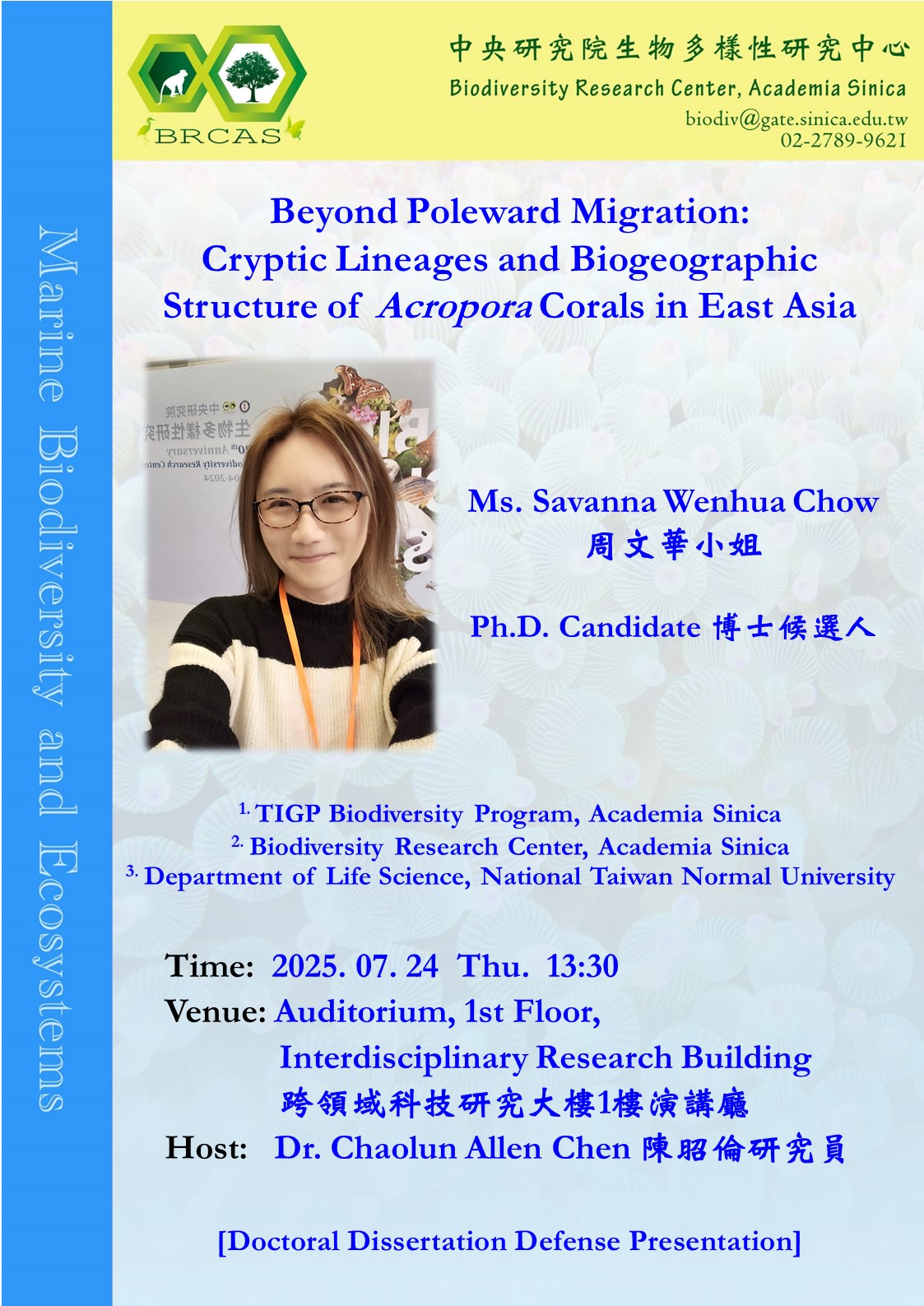- Lectures
- Biodiversity Research Center
- Location
Auditorium, 1st Floor, Interdisciplinary Research Building
- Speaker Name
Ms. Savanna Wenhua Chow (TIGP Biodiversity Program, Academia Sinica)
- State
Definitive
- Url
Abstract
Reef-building corals may respond to the rising seawater temperature caused by climate change through extinction, acclimatization, adaptation, and migration. Among these, poleward migration or range expansion into higher-latitude waters is considered a potential survival strategy, especially for the highly speciose coral genus Acropora. However, this perspective often neglects cryptic diversity within species. Taiwan is situated at the junction of the tropical and subtropical regions in East Asia, characterized by high coral richness and diversity, which is shaped by complex ocean currents and regional topography. This unique geographic position may serve as a stepping stone for the poleward expansion of coral species, making it an ideal location to test hypotheses related to cryptic diversity and poleward migration or range expansion.
This PhD thesis uses morphological, multi-locus phylogenetic, and genomic analyses to examine the cryptic lineage composition and geographic distribution patterns of three Acropora species—A. hyacinthus, A. solitaryensis, and A. muricata—in Taiwan and Japan. These species were previously used to suggest poleward migration and range expansion for reef-building corals. The results show that, contrary to prior beliefs of northward migration, these species actually consist of multiple distinct cryptic lineages with separate geographic distributions, separated by a north–south phylogeographic boundary within Taiwan and the Penghu Archipelago. These lineages are likely shaped by ecological preferences influenced by current oceanographic and climatic conditions. Demographic analyses indicate that some cryptic lineages may have survived in refugia during the Last Glacial Maximum and expanded afterward. This research highlights that poleward migration or range expansion occurs at the lineage level, not across the entire species. Coral populations at higher latitudes probably come from specific lineage range shifts that were isolated in historical refugia during periods of warmer climate, rather than from long-distance dispersal by tropical species. This challenges the common view of uniform species responses to climate change and shows that studying cryptic lineages is essential for accurately understanding coral survival and biodiversity.









 Home
Home

